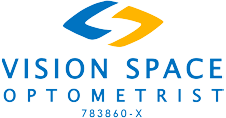
What is digital eye strain?
Digital eye strain (DES) is a term we might hear in other ways, like computer vision syndrome (CVS) and visual fatigue (VF). This term is widely used to define a variety of eye conditions and vision-related symptoms correlated to the prolonged use of digital devices such as mobile phones, tablets, and computers. As born in this digital age, children grow up with all the digital gadgets accordingly. They are not even informed about safe screen timing and its ill effects. Neither of them is the best judge of time, especially when they’re engrossed in a game or movie, so it’s important to consider using a timer to encourage those breaks for children’s eye care.
What causes digital eye strain?
Using computers or digital gadgets for a long time strains the eyes more than reading print material. Other reasons for DES are as follows:
- Less blinking while using computers (blinking is key to moistening the eyes)
- Watching digital screens at less than ideal distances or angles
- Using devices that have glare or reflection
- Using devices with poor contrast between the text and the background
Any underlying eye problem, such as eye muscle imbalance or uncorrected vision, can cause or worsen a kid’s eyesight and contribute to computer eyestrain. Some other relative factors also make the condition worse include:
- Glare on the screen
- Poor posture
- Setup of the computer workstation
- Circulating cool air, such as from air conditioning or a nearby fan
Symptoms of digital eye strain?
The common symptoms of DES include:
- Blurred vision
- Eye strain (Asthenopia)
- Headaches
- Having problems during board work in school
- Difficulty in concentration
- Dry eyes
- Neck and shoulder pain
- Eye discomfort
- Difficulty refocusing the eyes from near to distant objects and from distant to near objects
- Irritation of the eye
- Sensitivity to bright lights
- The heaviness of eyelids and redness of the eyes
Treatment of digital eye strain
After DES has been diagnosed depending on the symptoms experienced by the child and the severity of the condition by an eye care professional, a few different methods could be used to treat the condition. Several treatment strategies for DES include:
Eyeglasses
Children who are facing difficulties like refractive errors such as near-sightedness (myopia), far-sightedness (hypermetropia), or astigmatism may help reduce eye strain, a common symptom of DES by getting prescribed eyeglasses to correct the vision.
Eye drops
Eye drops for children help to create artificial tears and relieve symptoms of DES related to dry eye by lubricating the eyes. These eye drops work by maintaining the oil layer within the tear film of the eye, which reduces tear evaporation, keeps moisture, and therefore prevents dry eye.
Special lenses
Several light-blocking filters help reduce the symptoms of DES in children. While watching digital devices, some harmful light is emitted from them and came in direct exposure to the eyes of the little ones. Special lenses with tints or coatings may help block out these harmful rays and allow visual comfort for them.
Preventive measures
In this digital age, after the pandemic, it is unlikely that kids will stop using digital devices. Therefore, it is important to build healthy relationships between kids and digital devices to ensure that their tender eyes are still well protected while they can continue to enjoy all the benefits of these devices as a measure of children’s eye care.
Screen size and distance
The smaller and closer screen makes the child’s eyes work harder to focus on it. A larger screen, such as a laptop or desktop computer, and wider distance rather than a small phone screen might prove effective to reduce or prevent eye strain.
Eliminate glare
The more reflection on the child’s computer screen, the tougher their eyes have to work. Lower the brightness settings on your child’s computer and other devices and let them watch for less glare on the screen to ensure comfortable viewing.
Regular eye exam
Make regular eye exams part of your children’s eye care routine and healthcare schedule. Make sure at minimum your child is getting either the annual vision screening provided at school or a vision screening at your pediatrician’s chamber. Even if your child has a normal vision screening, they can still be at risk of asthenopia or other eye problems like DES.
Eyestrain doesn’t have serious or long-term consequences, but it can be aggravating and unpleasant for the kids. It can make them tired and d, irritated and reduce their ability to concentrate.
Vision Space Optometrists in Malaysia have been working successfully for a long time with highly educated and experienced eye health professionals in treating kids with various vision problems. For more details and queries, please visit the official website – http://www.visionspace.com.my/

